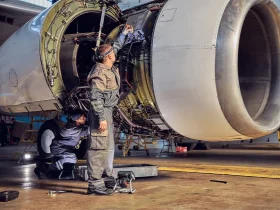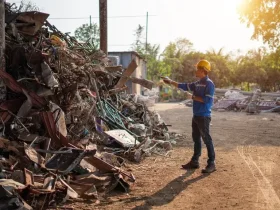In the scurrying world of production and processing, carrying out the right particle size classification can make an important difference in the adeptness and quality of results. Enter the air classifier—a versatile piece of equipment that guarantees precision in divorcing particles’ established size, shape, or mass.
But when exactly do you need an air classifier, and how can it benefit your operations? Let us inquire deeper into this fascinating field.
Key Applications of Air Classification
Certain industries densely rely on air classifiers to optimize their processes. Here are a few common uses of an Air classifier:
1. Mineral and Mining Industry
In mining, acquiring the desired atom size is critical for maximizing the extraction of valuable minerals. Air classifiers help separate the mineral to ensure that only the right-sized particles win for further processing. This not only embellishes the quality of the final product but more reduces energy devouring and equipment wear.
2. Cement Production
Cement manufacturers use air classifiers to guarantee the proper proportion distribution of raw food, which is essential for effective kiln movement. By optimizing this, they achieve revised combustion and noise quality, ultimately chief to superior end products.
3. Food Processing
In the snack industry, air classifiers are influential in producing compatible and high-quality products. From flour milling, where they separate different grades of flour, to spice crushing, where they ensure uniform atom size, air classifiers play an important role in claiming product principles.
4. Plastics and Polymer Industry
For plastic recyclers and manufacturers, attaining the right particle size is detracting to producing superior resins and compounds. Air classifiers assist by separating fines from granules, by enhancing the constancy and performance of the final product.
When Do You Need an Air Classifier?
Now that we have experienced where air classifiers are usually used, let us focus on when you might want one. Here are some synopsizes that warrant the use of an air classifier:
2. When Moisture is a Concern
Unlike traditional wet classification forms, air classifiers operate without water. This makes them perfect for materials that alert moisture or in environments where water use needs to be underrated.
3. When Energy Efficiency Matters
Air classifiers can lead to meaningful energy harvests by reducing the load on downstream supplies. By ensuring that only the right-sized pieces move forward, they help in curbing the overall energy use of the process.
Conclusion
Whether you are in excavating, cement production, food disposal, or plastic production, understanding when and how to resort to an air classifier can lead to important improvements in your operations. So, the next time you find yourself facing molecule size challenges, believe whether an air classifier might just be the solution you need.












